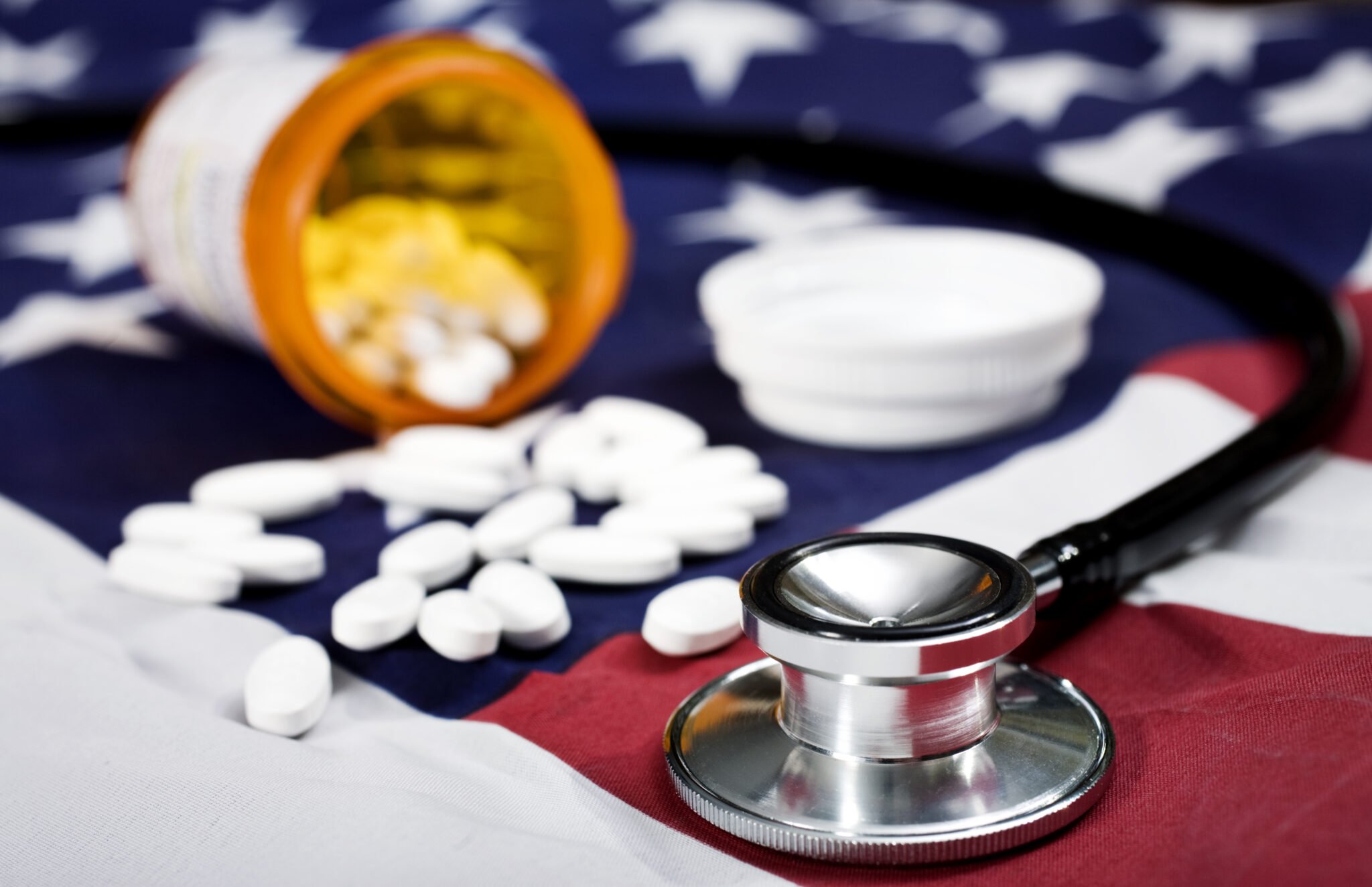Tragically, this past year marked a record number of deaths stemming from opioid abuse–over 100,000 lives were lost, according to the CDC, largely because of increased fentanyl overdoses. It was also a year of accountability—major drug companies, wholesalers, and pharmacy chains reached record opioid settlements filed by state and local governments totaling more than $50 billion—slated to be paid out over two decades. Another factor that figured prominently in America’s new approach to the opioid epidemic was COVID-19—specifically, the learnings from the healthcare industry’s response to the pandemic.
“Covid-19 laid bare a whole host of problems for all of America to see within the healthcare system—including regulatory complexity,” said Edward Bergmark, the founder and former CEO of Optum, the healthcare services wing of United Healthcare. “The challenges of the pandemic forced everyone to take a thoughtful look at all this regulation and realize that a lot of it is not in the best interest of patients. It is now imperative that state and federal regulators and lawmakers come together to make some of these innovations and best practices embraced during the pandemic permanent parts of a truly modern healthcare system.”

Worth spoke to over twenty experts from across the country who played key roles during the darkest days of the pandemic and are now focusing on other public health crises, such as the opioid epidemic. They represent various vantage points—physicians, hospital administrators, healthcare regulators, non-profit executives, and private sector healthcare leaders. Although they have varying points of view, they all see COVID-19 as a watershed moment for the healthcare industry.
Some lessons are already law. In the final hours of 2022, President Joe Biden signed a $1.7 trillion spending package that addresses various healthcare policy issues, including Medicaid redeterminations. But the new Congress will be left to tackle several elusive healthcare priorities. Despite widespread bipartisan support, issues such as the roll-back of prior authorizations, increased price transparency for PBMs (pharmaceuticals benefits managers), more incentives to support alternative payment models and value-based care, and telehealth payment parity are still top priorities.
As the healthcare industry looks to leverage the lessons learned during the pandemic, it will be important that policymakers come together to shape a patient-first landscape where local health authorities can innovate and customize approaches best suited for their communities.

Appendix K Paved the Way for Innovation for the Most Vulnerable
For a behind-the-scenes look at how innovation unfolded during the pandemic, Worth spoke to veteran healthcare executive Jon Hamdorf, who led Kansas’ $4 billion Medicaid program under Governors Sam Brownback and Jeff Colyer. During Covid, he served as the COO of United Healthcare in Kansas. “The pandemic pushed the healthcare system to its limits. Tons of issues were exposed. But also, massive amounts of innovation occurred in a very short period of time,” observed Hamdorf. “From a Medicaid perspective, the key lever was something called Appendix K, which is nestled within the waivers for home and community-based delivery of Medicaid services. This tiny little caveat within Medicaid regulations was basically an ‘emergency switch’ that allowed states to use the declaration of a PHE to try out all sorts of new ways of delivering healthcare during the pandemic. Across the country, Appendix K gave Medicaid administrators a license to innovate like never before.”
Telehealth Was a Game Changer
Perhaps the biggest change was the broad acceptance of telehealth visits—a feature that most healthcare experts predict Congress will codify as a permanent feature of the U.S. health system.
“Telehealth and asynchronous digital care during Covid were game changers. We not only saved lives but ameliorated bottlenecks in access for countless individuals,” said Dr. Sameer Badlani, the chief digital officer & EVP for Fairview Health Services. In 2022, over a third of all patients nationwide received some sort of virtual care—a number that is 38 times higher than before the pandemic—with the vast majority indicating that they would use telehealth in the future. “There is absolutely no reason we should not be able to take advantage of all the innovation stemming from Covid and apply [them] to other health crises such as substance abuse and the opioid epidemic—to name just a few,” added Baldani.
State Autonomy and Public-Private Partnerships Are Key
Another area where there was tremendous innovation was at the state level, specifically in PPPs (public-private partnerships). When local health authorities realized that they were outmatched by the pandemic, far more agile private companies were vital in filling gaps or developing programs. In the spring of 2022, the National Bureau of Economic Research issued a comprehensive study entitled “The Final Report Card on the States’ Response to Covid-19” evaluating each state’s relative resilience to the pandemic. Although there were several high-profile cases of private sector abuses during Covid, in many cases, the states that sought help from private industry (e.g. Utah, Maine, Vermont) fared better than those that relied too heavily on their existing healthcare infrastructure (e.g. California, New Jersey, Hawaii).
Take Covid testing during the early months of 2020, for example. The diagnostics infrastructure was utterly overwhelmed by demand, so many governors from both parties sought out private sector partners with the resources to set up and source massive remote testing centers—a move that proved critical in tracking the spread of the virus.
Under normal circumstances, collaborations between regulators, biotech, diagnostics companies, and private healthcare services companies are rare and difficult to put together due to complex agreements, varying strategic interests, and sheer economics. But during the pandemic, uniting became a necessity. Many innovative public-private partnerships emerged and ended up playing critical roles.
Health Equity Will Remain a Struggle
Despite optimism around leveraging pandemic-era learnings, Dr. Alister Martin, a former senior White House public health and policy advisor, now the CEO of A Healthier Democracy, sees some potential pitfalls. “The marshaling of resources to address Covid was transformational, but health equity was, unfortunately, something of an after-thought. Much of the policies and approaches towards testing and vaccinations overlooked the reality of communities of color and left them particularly devastated by the virus,” commented Dr. Martin. He cited a COVID-19 testing facility in the parking lot at Gillette Stadium that closed at 6:00 pm every day. “Great idea, but how does a single mom with no access to transportation who works until 6:30 pm every day take advantage of such a site? She can’t. And this is the sort of health equity issue that was a hallmark of the early days of the Covid response. We need to make sure we don’t make these same types of mistakes as we move forward.”
Applying Pandemic-Era Learnings to Other Public Health Crises
While accepting telehealth visits seems like a foregone conclusion, there is still an underlying social determinant of health that needs to be addressed: broadband connectivity and access to digital devices. The Biden Administration’s Infrastructure Law set aside over $400 million for rural broadband investment, but there are still connectivity deserts across rural states and lingering gaps in communities of color.
The efficacy and creativity that emerged during the pandemic is an innovation that should support the healthcare industry as it looks to address the opioid crisis and other public health issues.
COVID-19 has taken over a million lives in the U.S. Now it’s up to the healthcare system to leverage the lessons from this disruptive period in history and forge a new model to address the country’s most salient public healthcare challenges.







